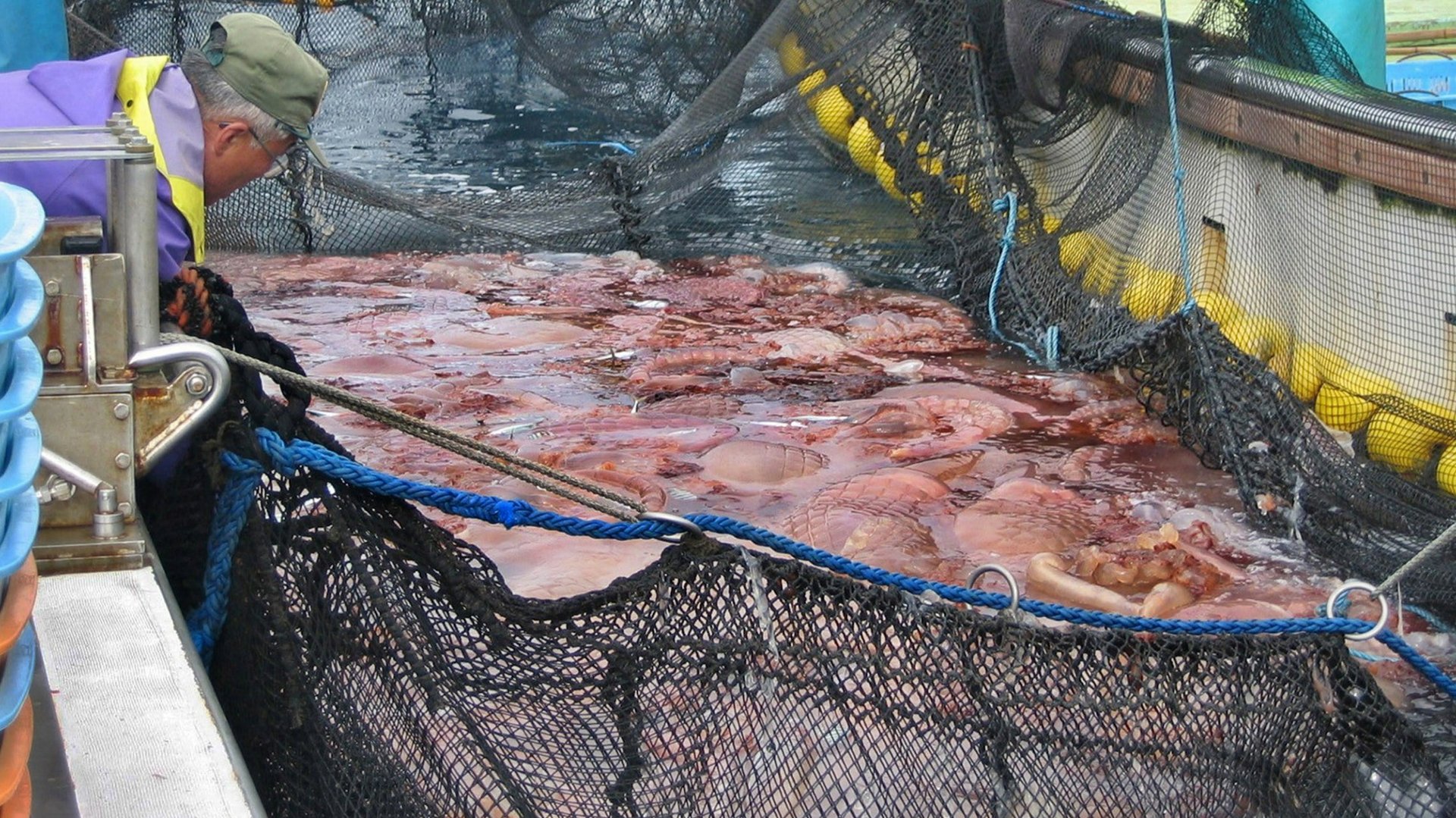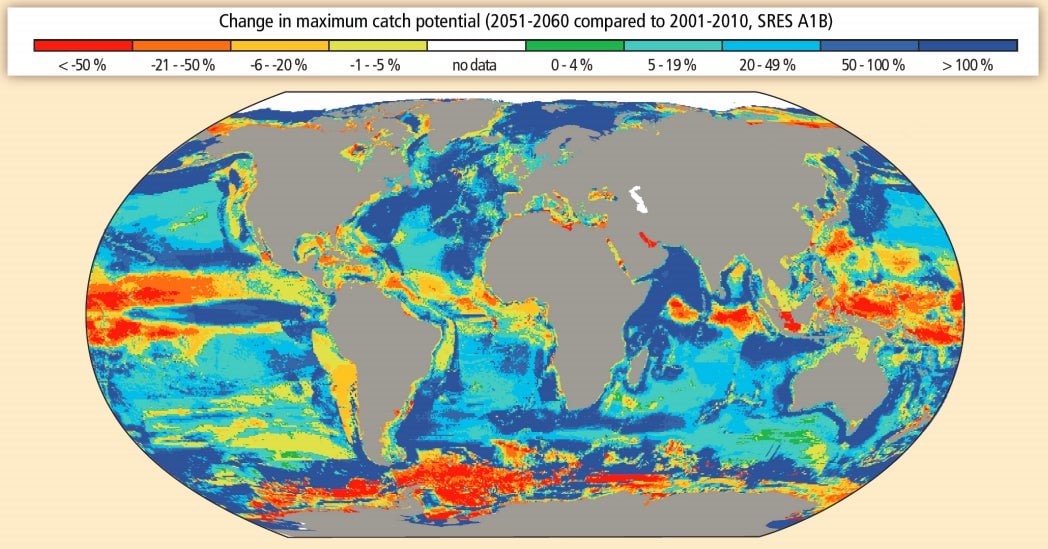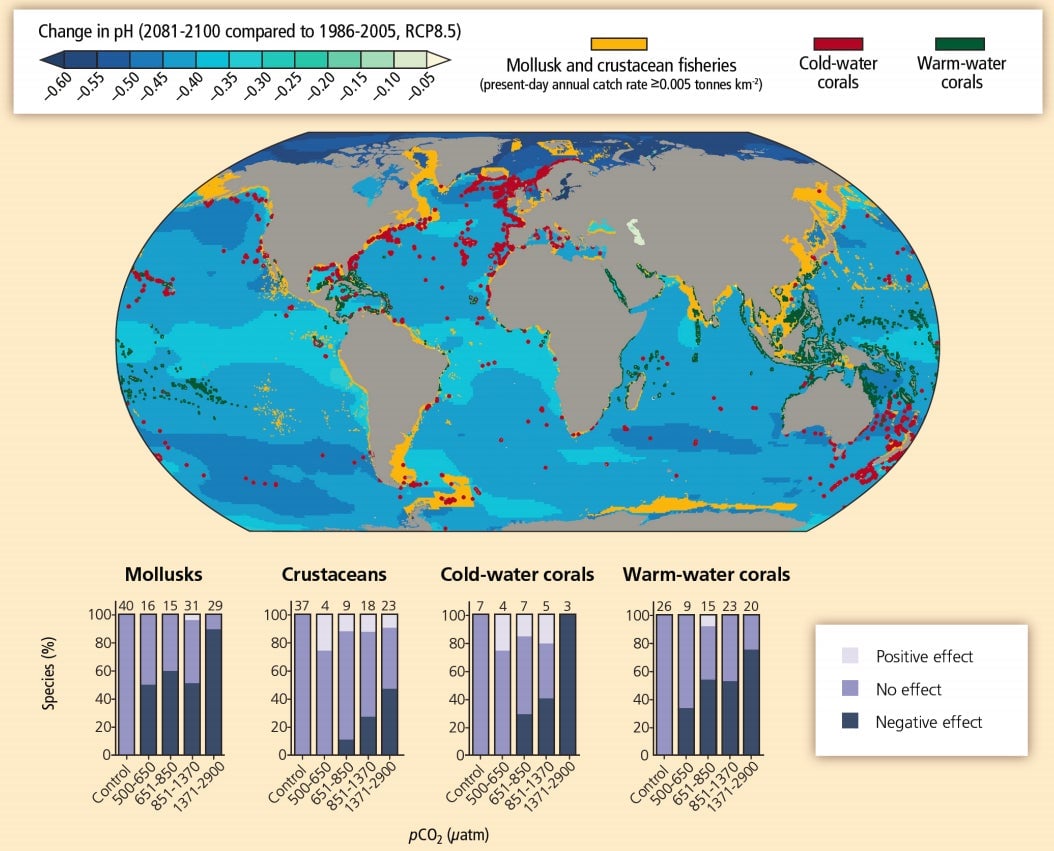Climate change will mean way less sushi—and way more jellyfish
To anyone on land, climate change can seem subtle. The sea, however, is changing alarmingly. The latest report from the UN’s Intergovernmental Panel on Climate Change (IPCC)—the second of three reports on the impacts of global warming—offers the scary forecast that the hotter the planet, the higher the risk of ”abrupt and irreversible changes” (pdf, p.13) to ecosystems.


To anyone on land, climate change can seem subtle. The sea, however, is changing alarmingly. The latest report from the UN’s Intergovernmental Panel on Climate Change (IPCC)—the second of three reports on the impacts of global warming—offers the scary forecast that the hotter the planet, the higher the risk of ”abrupt and irreversible changes” (pdf, p.13) to ecosystems.
We’ve already tipped past some of those ”tipping points” in the oceans, though. By the middle of the century, global warming will have thoroughly reshuffled marine ecosystems (pdf, p.16). That will leave some areas with more sea life to catch, but will thin out the marine populations in more temperate climes. The complex interplay of these and other factors will invite the invasion of a few marine species, driving others to new, less hospitable habitats—and even extinction.
Fish don’t like it hot
Since fish are lousy at adapting to hotter water, they simply move to where it’s cooler. This, says the IPCC report, will hurt commercial fishing in a big way. As fishing populations in the equatorial areas disappear, more fish and marine invertebrates will be pushed toward the poles. That means fishing fleets will have to travel farther, driving up costs. And some species won’t survive these strange new habitats.
The red and yellow areas in the map below show where fish catches will decrease the most. Many of these are close to shore, where commercially valuable species tend to congregate because food is more plentiful. There are lots of blue areas where fish populations are predicted to increase, but they’re smaller to begin with. The IPCC is vague on whether this will reduce the total global fish supply, but catching those fish will certainly be harder.

Seas of acid
Fish might be crummy at adapting, but they’re a lot better than corals—the seafloor invertebrates that secrete the stony skeletons that form reefs. It’s hard for an entire garden of exoskeletons to up and move when it gets too hot. The heat will kill a lot of those corals.
But the other big problem is the oceans’ acidity. As the oceans absorb more of the growing levels of carbon dioxide in the atmosphere, the CO2 will turn the water more acidic almost everywhere on the globe. That makes it hard for corals to grow, as well as for crustaceans—e.g. crabs, shrimp, lobsters—and mollusks to form shells, which are crucial for defending themselves from predators and disease. And since intricate marine food webs center around coral reefs, commercial fishing stocks will take a hit too as reefs decay.

The spread of dead zones
Another thing the IPCC folks agree on is that climate change is stripping the oceans of oxygen. Warmer water simply holds less of it, making it harder for many sea creatures to survive.
Not all creatures, though. Take, for example, the oxygen-stripped waters (paywall) of the East China and Yellow seas. As other animals have fled or died, Nomura jellyfish—gelatinous peach-colored behemoths the size of a large refrigerator—have thrived.
Because it’s hard for anything else to compete, the jellyfish never leave—as has happened off the coast of Namibia and in the Black Sea. In fact, these “dead zones” are a prime example of the “tipping points” the IPCC flagged—changes to the ocean that can’t be reversed.